On October 10, the 21-day launch window will open for Europa Clipper, one of the most ambitious interplanetary missions in recent years. Its destination is Europa, a Jupiter’s moon that hides an enormous ocean beneath its frozen surface. To mark this occasion, the Universe Space Tech team details all you need to know about this spacecraft’s mission, tech specs, and flight plan.
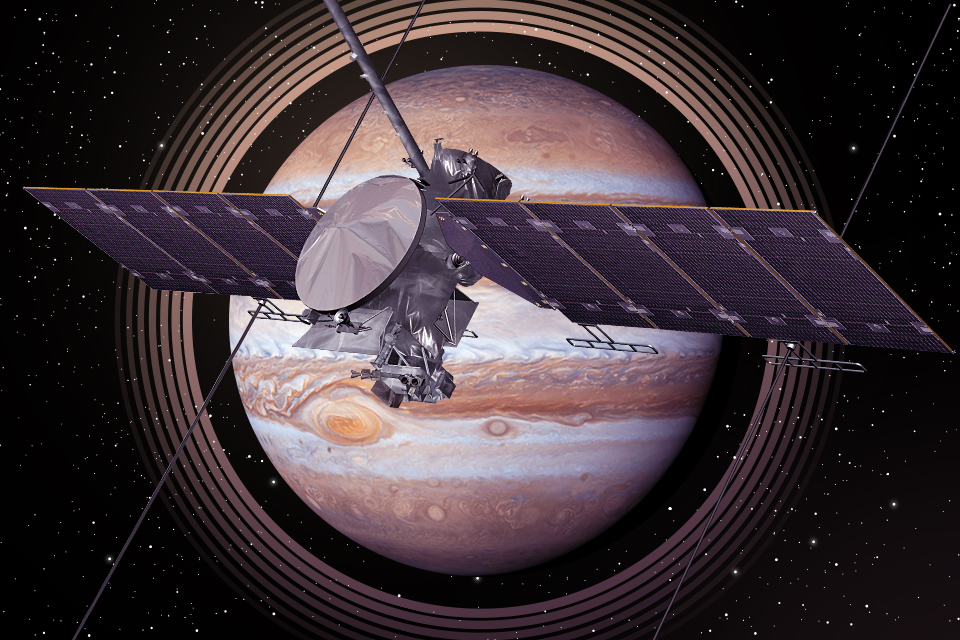
The World of Hidden Oceans
Only until recently, our wildest dreams of space exploration didn’t venture beyond Mars. By now we know that billions of years ago, the Red Planet had a more temperate climate with a fully functioning hydrosphere, implying that at some point it may have harbored some form of life.
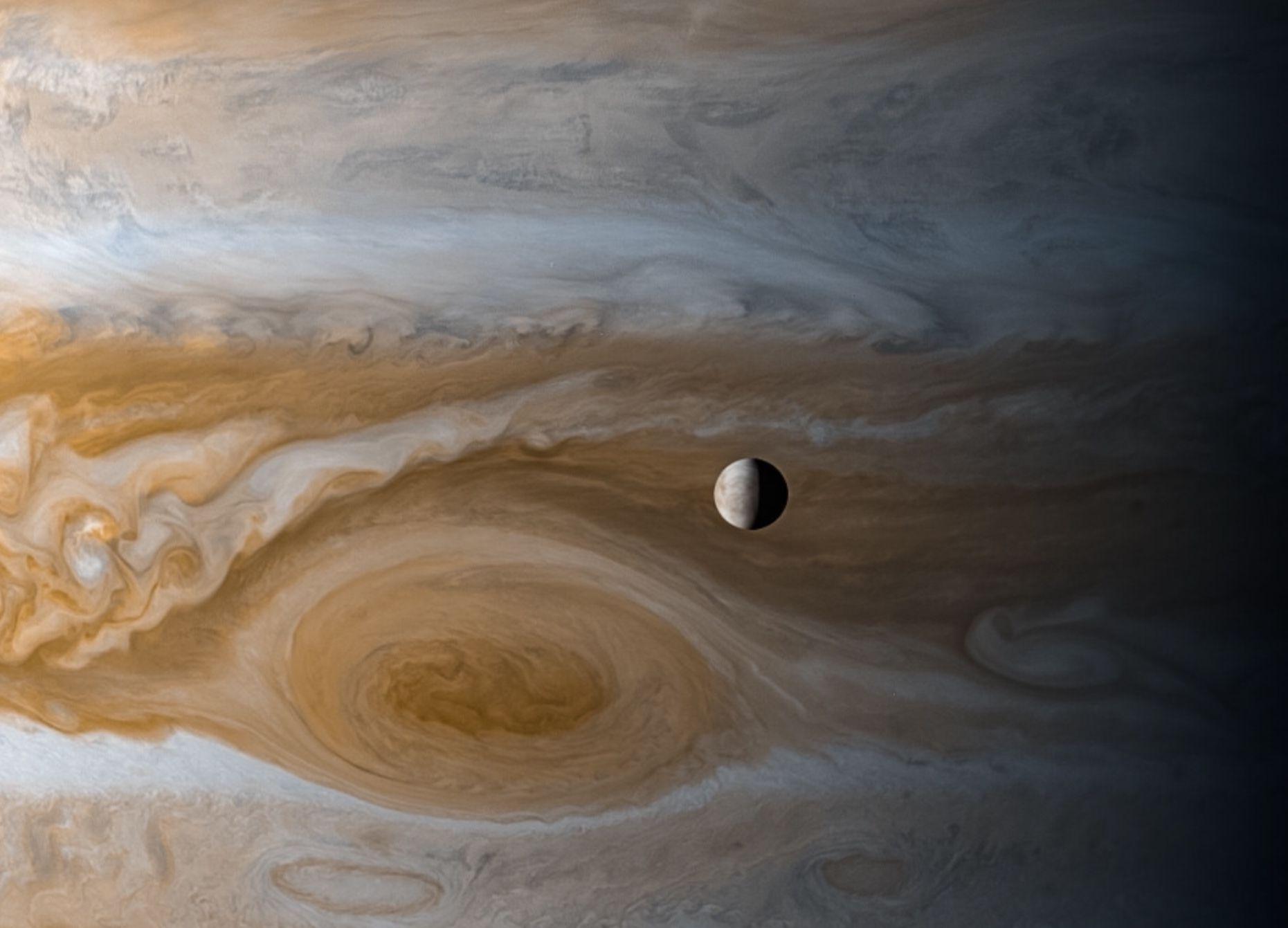
Unfortunately, the barren Martian desert we see today has been devoid of water for a long time. But the Solar System does have other worlds with surviving oceans, namely the icy moons of gas giants that hold enormous amounts of water within their depths. And water suggests the possibility of life.
One of the most intriguing of these water worlds is Europa, the fourth-largest moon in Jupiter’s orbit. Its diameter measures 3,120 kilometers or 1,939 miles, so slightly smaller than our Moon. Its ice-covered surface is one of the flattest in the Solar System, meaning it has very few crates and almost no points of elevation.
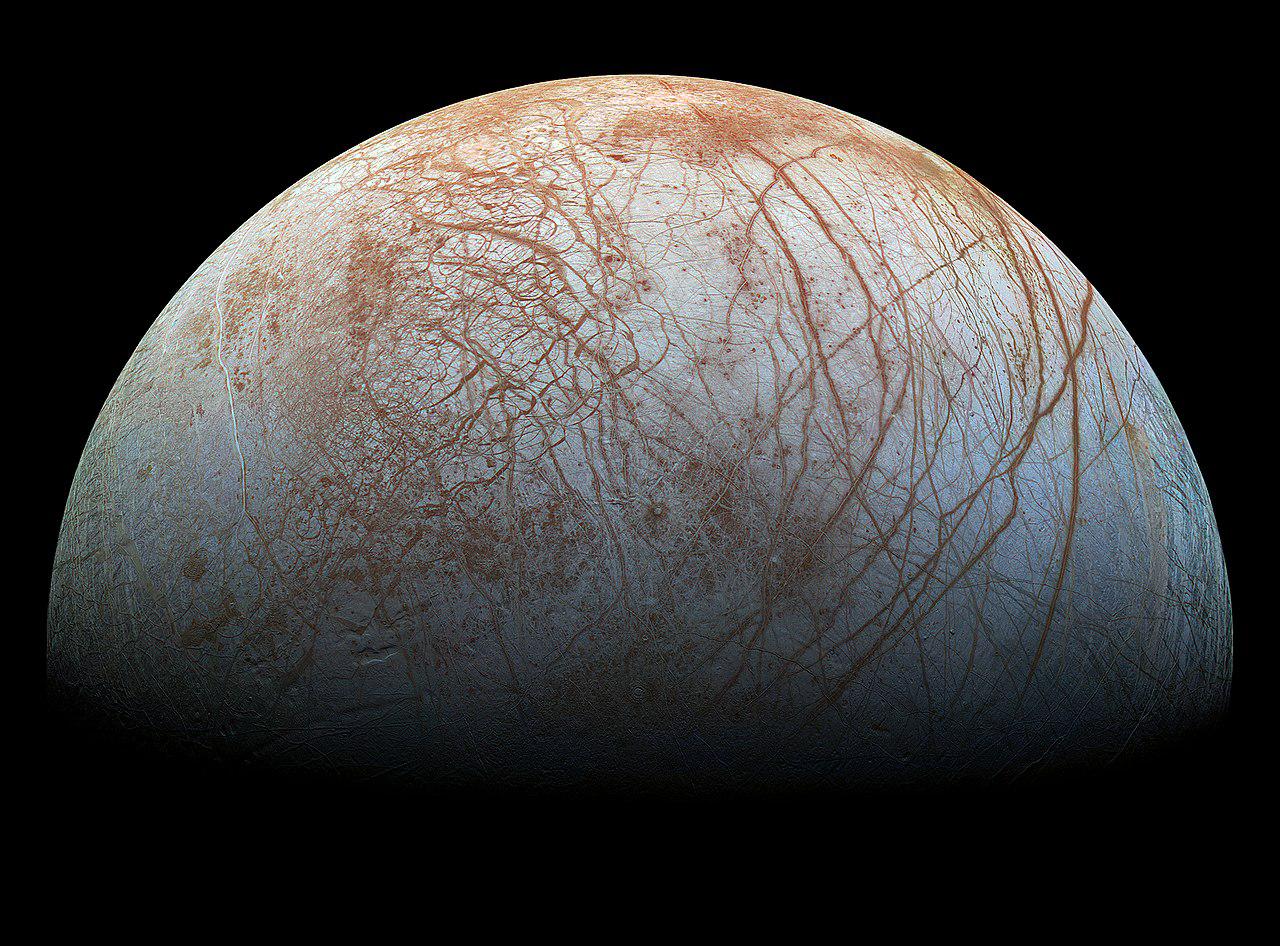
But scientists are more interested in what lurks beneath that surface. Based on the data from Voyager and Galileo, we can infer that the thick icy top layer conceals a massive ocean spanning over 100 kilometers or 62 miles. Which is more than all Earth’s oceans combined. Europa’s ocean also never freezes over — courtesy of the moon’s gravitational bond with Jupiter and other satellites.
It’s only natural that scientists crave to learn more about this huge body of water, namely the ocean’s properties, its chemical composition and, more importantly, whether it’s capable of sustaining life. Trying to answer these questions is the core part of Europa Clipper’s mission.
Technical Specifications of Europa Clipper
Europa Clipper was built by NASA’s Jet Propulsion Laboratory on the budget of nearly 5 billion dollars. This is the most complex automated spacecraft in NASA’s history. Europa Clipper’s mass is 6,025 kilograms or 13,283 pounds, with fuel accounting for about 2,750 kilograms or 6,063 pounds of the total value.
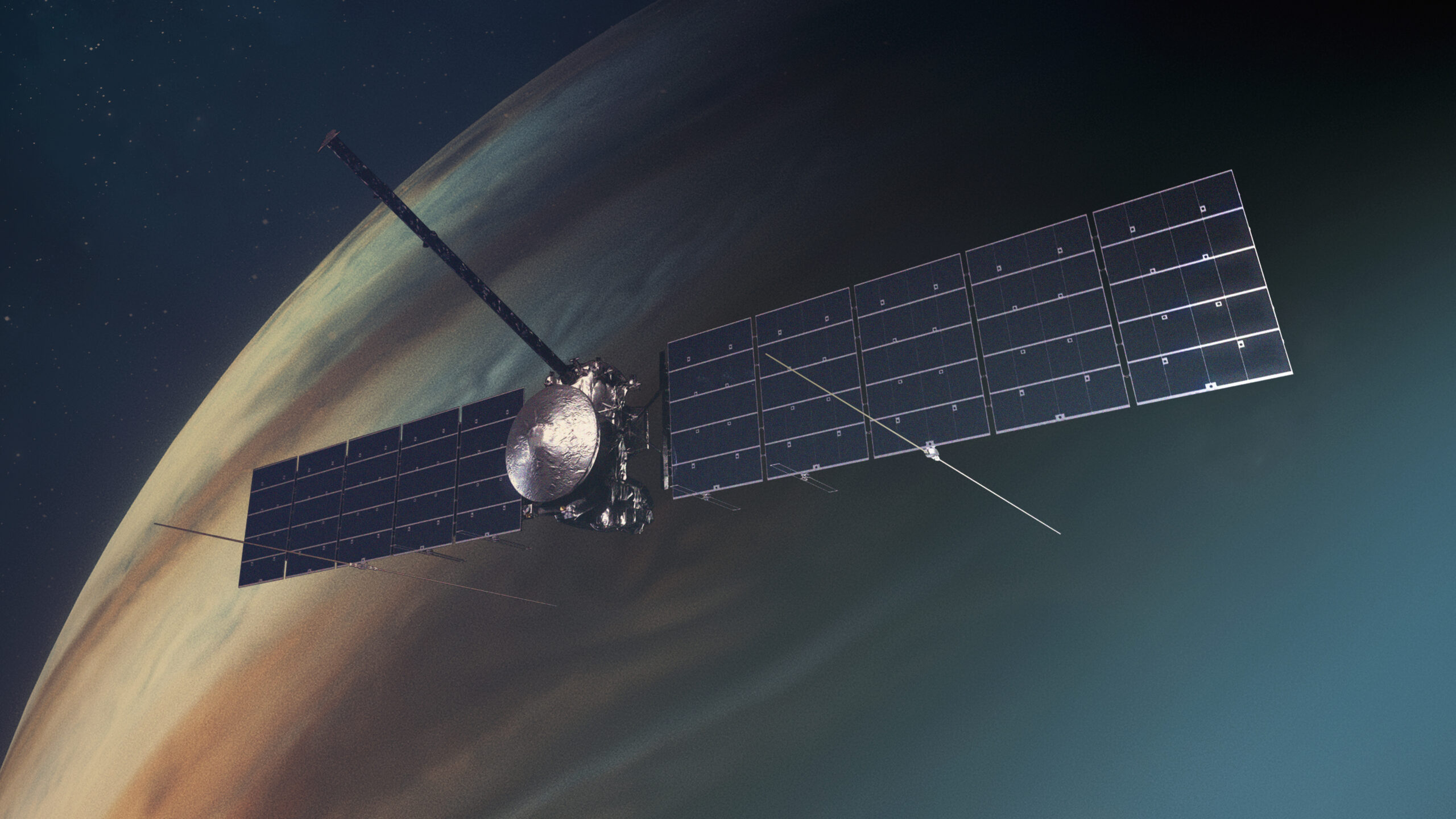
Europa Clipper will draw energy from two enormous solar panels comprising five segments, each 14.2 meters (46.6 feet) long and 4.1 meters (13.5 feet) tall. They are the largest solar panels ever installed on a NASA interplanetary craft. When they unfold, Europa Clipper’s ‘wingspan’ measures 30.5 meters, or roughly 100 feet. So slightly larger than a basketball court.
Since Jupiter orbits the Sun at a distance of over 700 million kilometers, or 435 million miles, and receives only about 3 to 4 percent of Earth’s sunlight, the solar panels have to compensate for this lack with oversized dimensions. So engineers simply had no other choice but to mount these giants on the probe.
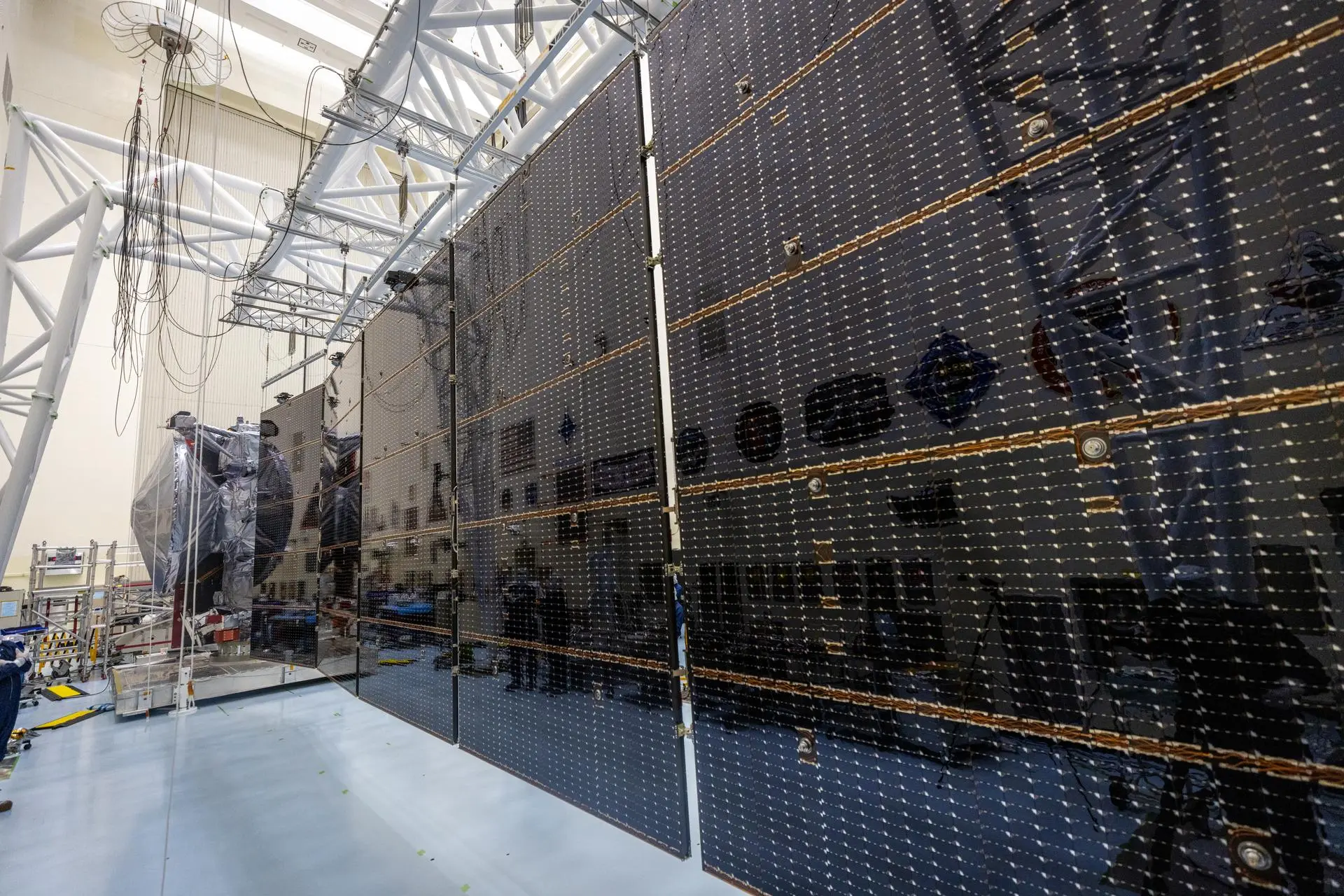
Europa Clipper is equipped with nine scientific instruments. Three of them, including the mass spectrometer, dust analyzer and spectrograph, will focus on Europa’s incredibly thin atmosphere which is made up of ice and dust particles. The latter are projected into space by micrometeorite impacts. Another component is water vapor, which is likely a byproduct of geyser activity.
The probe will also create a detailed map of Europa with a slew of its on-board cameras. Its Mapping Imaging Spectrometer for Europa, or MISE for short, will visualize the distribution of salts and organic molecules on the moon’s surface. In addition, the probe can detect thermal radiation to pinpoint regions with geyser activity. Europa Clipper will also be able to peek under the satellite’s icy shell by using radar and a magnetometer. Their data will then help determine the thickness and salinity of Europa’s ocean.
Message in a Bottle
Apart from scientific instruments, Europa Clipper also carries a metal plate with a symbolic message etched on it. Its main section is reserved for the poem by Ada Limón, written specifically for the mission. Other contributions include the word ‘water’ translated into multiple languages, including Ukrainian, as well as the Drake equation and the portrait of Ronald Greeley, who is considered to be one of the founders of planetary science.
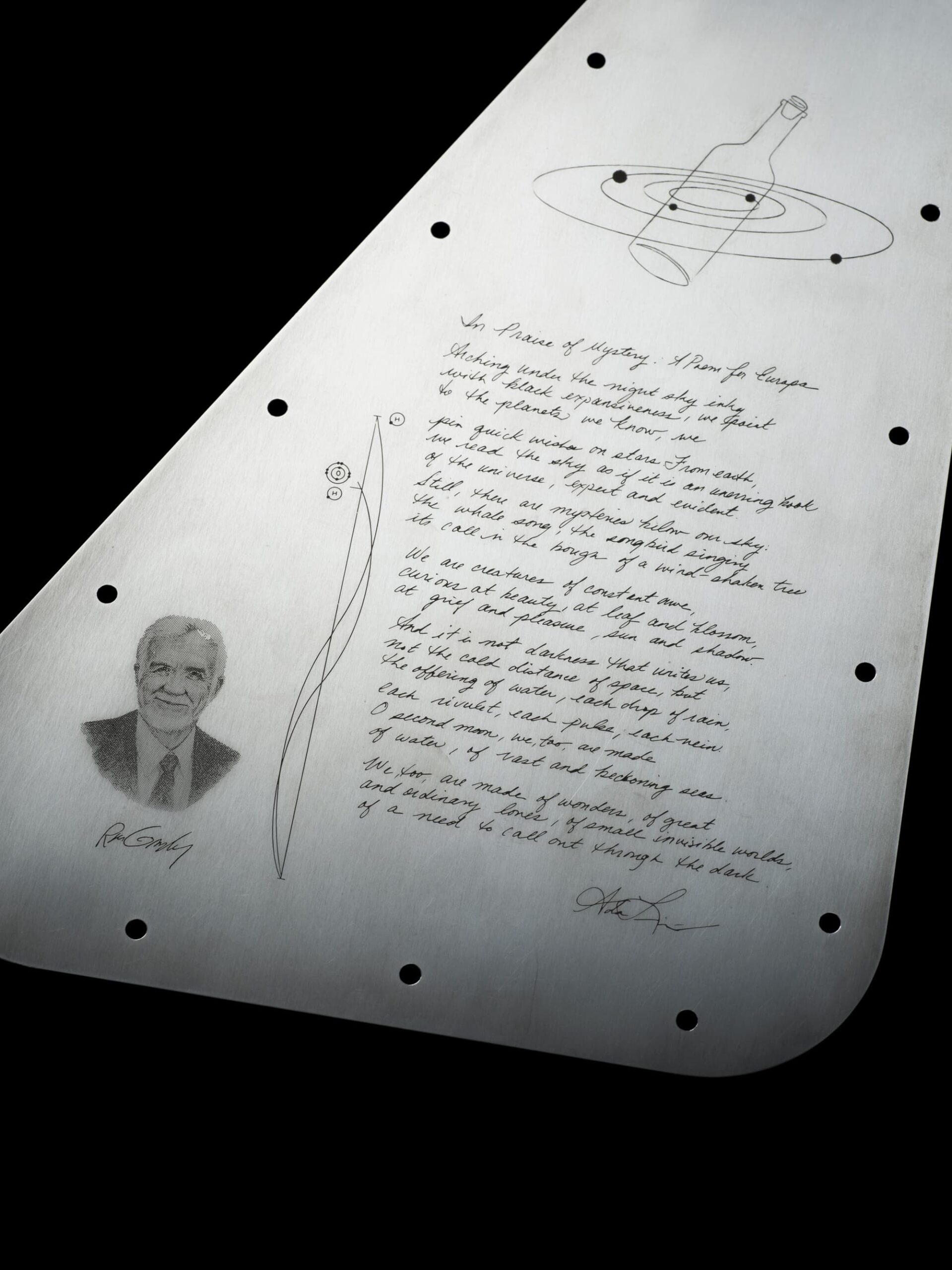
Alongside the poem, the plate displays the names of 2.6 million participants of NASA’s Message in a Bottle campaign. These names were engraved on a silicon chip the size of a fingernail, which was then incorporated into an etching that depicts the orbits of Jupiter’s four largest moons. The centerpiece role for this artwork went to the bottle as an homage to NASA’s campaign.
Europa Clipper’s Flight Plan
The favorable 21-day launch window for Europa Clipper will open on October 10. The probe will be delivered by the Falcon Heavy rocket, though it isn’t quite powerful enough to carry Europa Clipper directly to Jupiter. To rectify this, the probe will use the gravity of other planets to get there. In February 2025, it’s scheduled to perform a flyby of Mars and then do the same with a slingshot of Earth in December 2026. The two maneuvers will help Europa Clipper reach Jupiter by the end of April 2030.
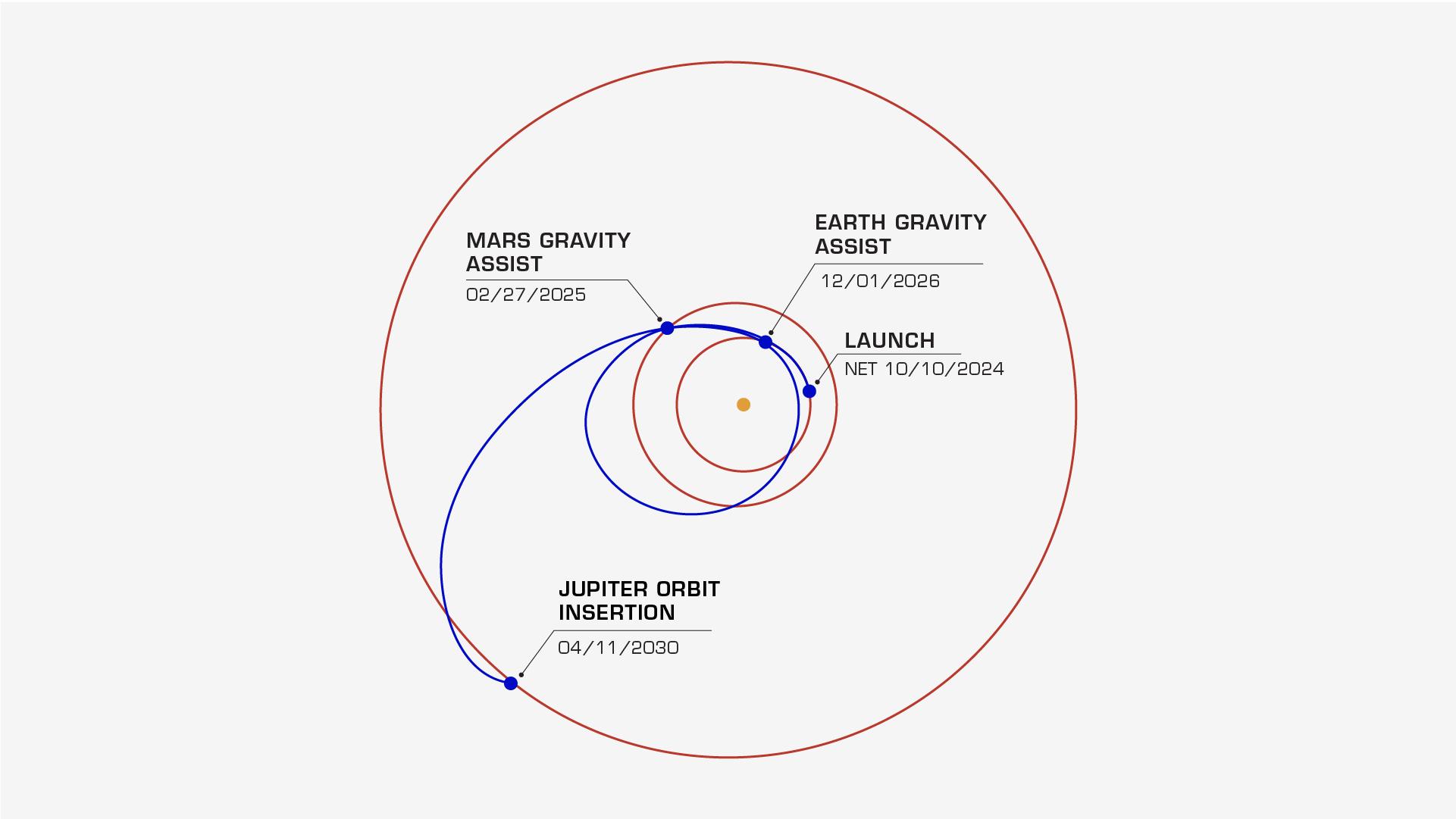
Jupiter is surrounded by the most powerful radiation belts in the entire Solar System, placing Europa’s orbit right through one of them. Its radiation levels are so high, that just one day on Europa’s surface will prove fatal for any human. To account for this, Europa Clipper will orbit Jupiter instead of Europa itself. While in Jupiter orbit, the probe will periodically approach the icy moon and conduct observations, thus minimizing the impact of Jupiter’s radiation. Another safety measure against radiation is a sort of internal ‘vault’ that shields Europa Clipper’s most sensitive electronic equipment.
Europa Clipper’s scientific program, planned as a four-year mission, foresees 49 close flybys of Europa. Though NASA hopes to extend the flight, provided the probe successfully avoids any serious issues.
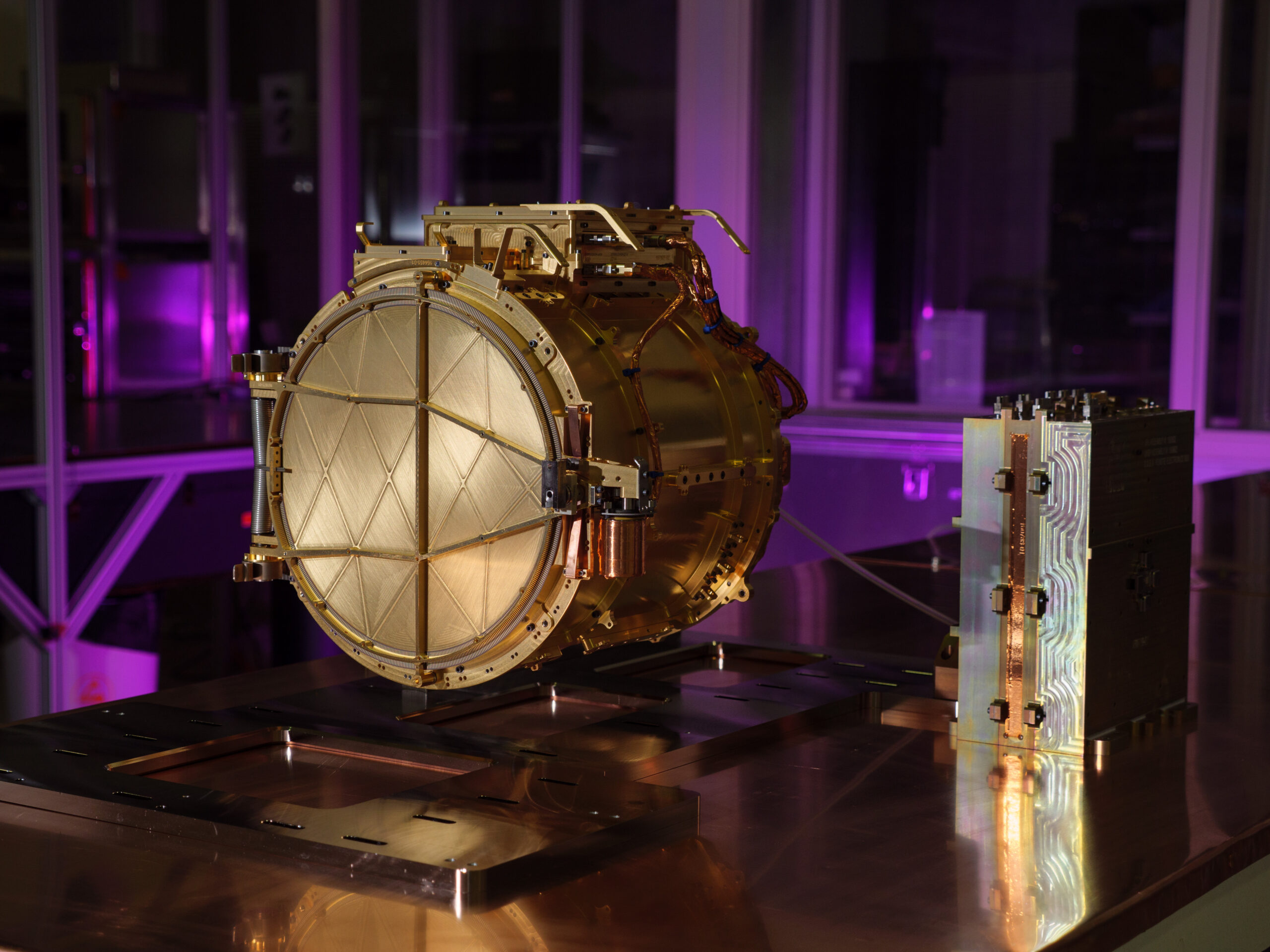
Thanks to the Hubble telescope, we know that Europa periodically emits water vapor. A sign of geyser activity, which could be connected to a subsurface ocean, this phenomenon presents us with a great opportunity. If Europa Clipper manages to pass through such a vapor stream, it might be able to analyze its composition.
According to a recent study, the probe’s instruments, namely the SUDA, may be powerful enough to detect the tiny fraction of bacteria that could be dwelling in Europa’s subsurface ocean.


